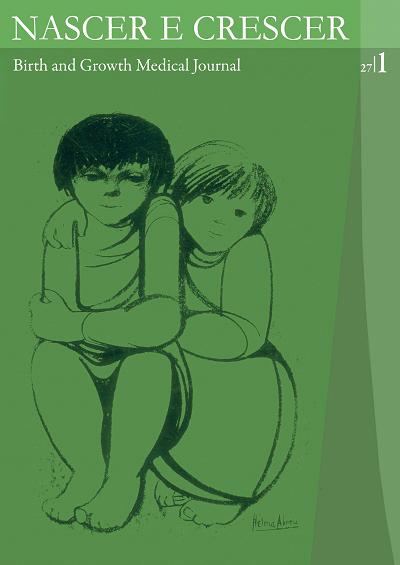Cutaneous Larga Migrans - presentation of two typical cases
DOI:
https://doi.org/10.25753/BirthGrowthMJ.v27.i1.9487Keywords:
Child, cutaneous Larva Migrans, emigrantAbstract
Introduction: Cutaneous Larva Migrans is a dermatosis caused by nemantode parasites, mainely Ancylostoma brasiliensis and Ancylostoma caninus. It is an endemic disease in tropical countries but a rare diagnosis in the rest of the world.
Case Report: We report the case of a ten-year-old child emigrated from Angola. The physical examination showed scarring injuries from previous incisions made as a form of treatment as well as a serpiginous lesion on the dorsum of the left foot, compatible with cutaneous Larva Migrans. The patient was started on albendazole and complete resolution of symptoms was obtained after one week. About that time, the patient’s brother, who had the same symptoms on both feet, was submitted to the same treatment, also with resolution of symptoms.
Discussion: The authors wish to enphasize the relevance of this case due to the migration from countries with high prevalence of cutaneous Larva Migrans.
Downloads
References
Macias VC, Carvalho R, Chaveiro A, Cardoso J. Larva Migrans cutânea – a propósito de um caso clínico´. Revista SPDV 2013; 71.
Ferreira C, Machado S, Selores M. Larva Migrans cutânea em idade pediátrica. Nascer e Crescer 2003; 12: 261-4.
Heukelbach J, Feldmeier. Epidemiological and clinical characteristics of hookworm-related cutaneous larva migrans. Lancet Infect Dis. 2008; 8:302-9.
Hagmann S, Neugebauer R, Schwartz E, Perret C, Castelli F, Barnett ED, Stauffer WM, GeoSentinel Surveillance Network. Illness in Children After International Travel: Analysis From the GeoSentinel Surveillance Network. Pediatrics 2010; 125:e1072-80.
Weller PF, Leder K. Hookworm-related cutaneous Larva Migrans. Up-to-date: 2015.
Alves C, Proença V. Larva Migrans cutânea – um caso de apresentação típica no viajante. Revista Portuguesa Medicina Geral e Familiar. 2012; 28:136-8.
Kliegman RM, Behrman RE, Jenson HB, Stanton BF. Nelson. Tratado de Pediatría. 18th. Barcelona: Elsevier, 2008.
Kerri SP, Richard GL, Amanda NW, Noreen W, David H. Cutaneous Larva Migrans. The Lancet Infectious diseases 2011; 377:1948.
Moreira, H. Emigração Portuguesa - Estatísticas retrospectivas e reflexões temáticas. Revista de Estudos Demográficos 38: 47-65.
Downloads
Published
How to Cite
Issue
Section
License
Copyright and access
This journal offers immediate free access to its content, following the principle that providing free scientific knowledge to the public provides greater global democratization of knowledge.
The works are licensed under a Creative Commons Attribution Non-commercial 4.0 International license.
Nascer e Crescer – Birth and Growth Medical Journal do not charge any submission or processing fee to the articles submitted.


